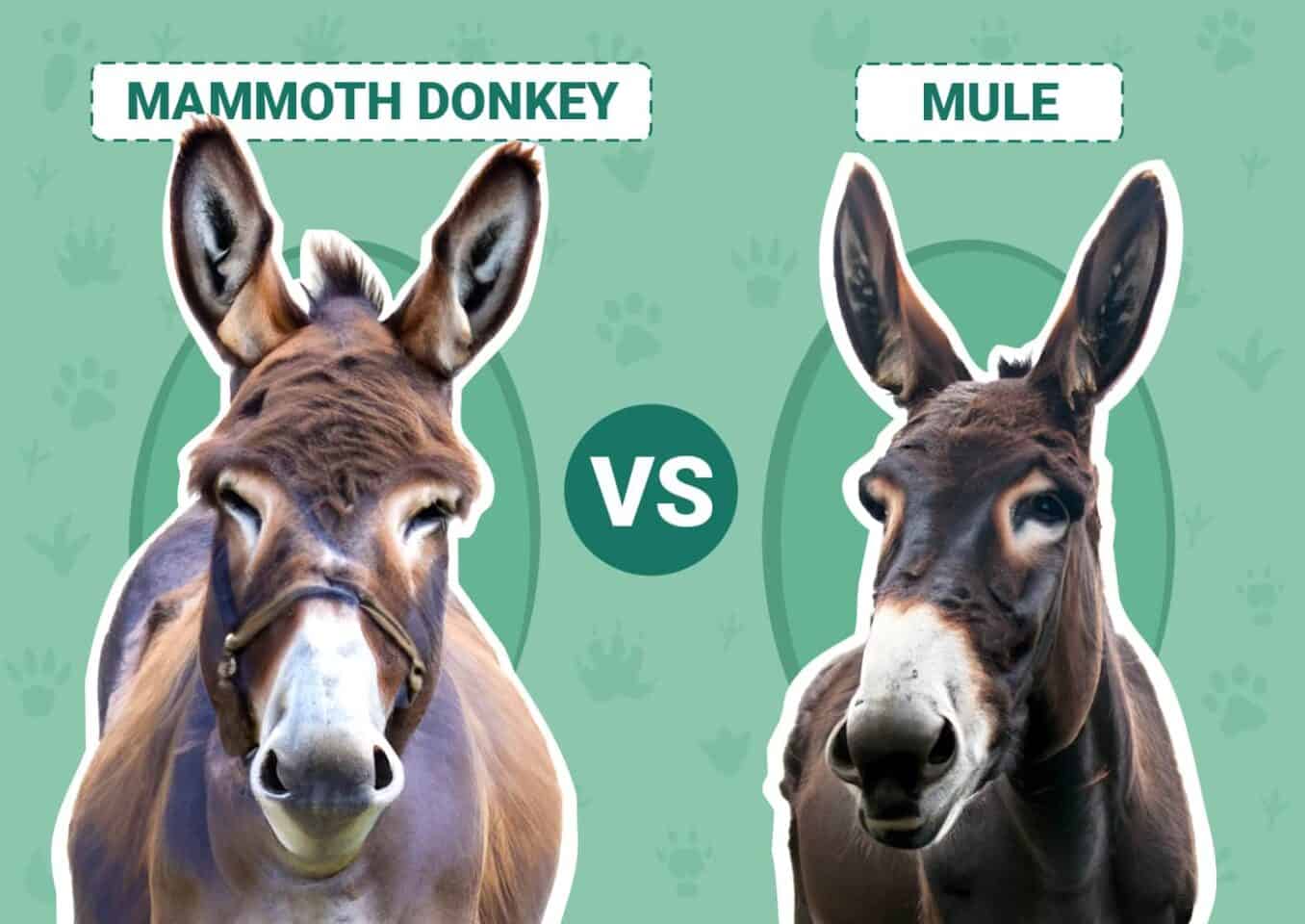Mammoth Donkeys and Mules are hoofed animals and share some similarities. Genetically, they are cousins, but the two types of animals are very different. They have different physical characteristics, but perhaps the biggest difference is that while donkeys can reproduce, mules cannot.
There are differences in weight, height, ears, and markings on the two types of animal, as well, with the donkey being a member of the horse family and the mule being the offspring of a male donkey and a female horse.
Read on to learn the differences between these two hoofed pack animals and to find which is better suited to your needs.

Visual Differences
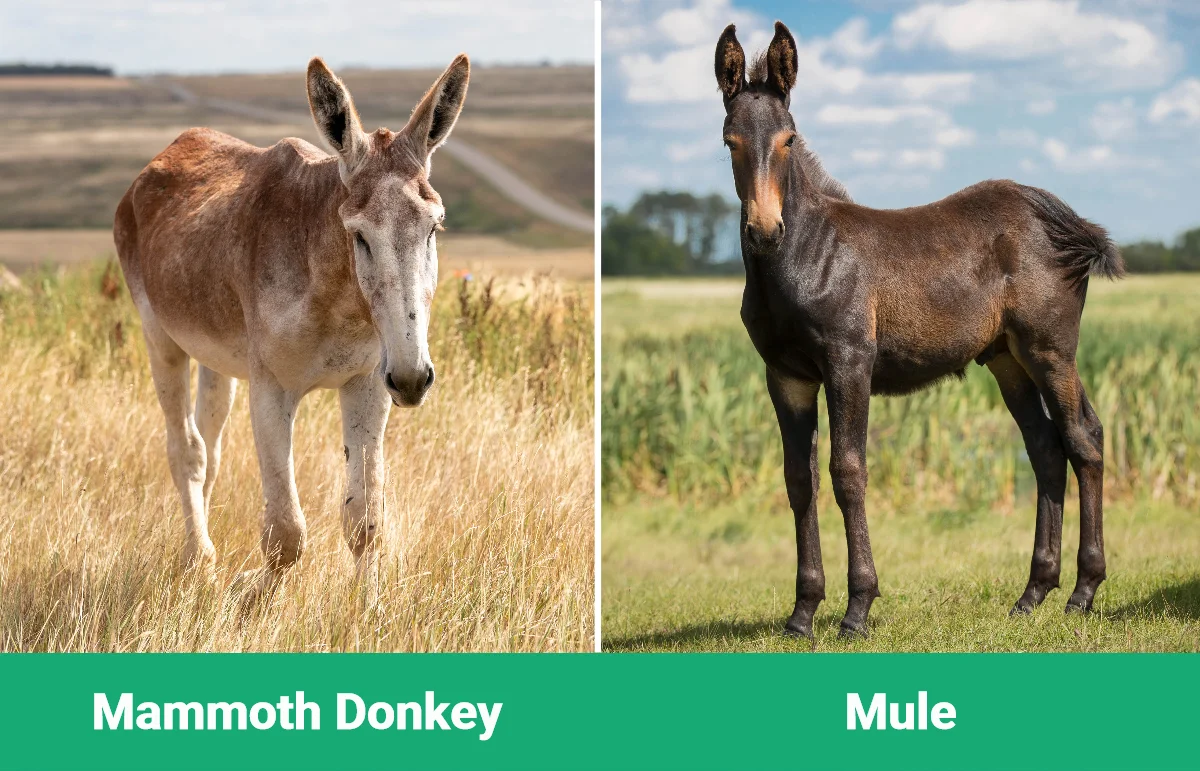
At a Glance
- Origin: USA
- Size: 54–68 inches
- Lifespan: 30–50 years
- Domesticated?: Yes
- Origin: Turkey
- Size: 50–70 inches
- Lifespan: 35–40 years
- Domesticated?: Yes

Mammoth Donkey Overview
The Mammoth Donkey was bred from large donkeys that were taken to the U.S. by Europeans. George Washington was involved in the development of the breed as he and farmers of the time looked for animals that were capable of working farms and carrying weight. By 1788, Washington was offering his own stud service.
Characteristics & Appearance
The Mammoth Donkey is a very large donkey breed. Males must be at least 56 inches and females 54 inches to be considered Mammoth Donkeys, and they can reach heights of 65 inches. The largest Mammoth Donkey measures 68 inches tall.
As well as being all, Mammoths have thick legs and robust heads. They have long ears that stand tall, and they have a white underbelly and muzzle with a dark brown coat.
Temperament
Mammoth Donkeys tend to be hardworking. When given a task, they will get their head down until that task is complete. They also have an amenable temperament, which is important because they need to get on with their human handlers.
They do take a little longer to mature and reach full size, compared to smaller donkeys, but it also takes them longer to reach senior age so they can enjoy a long adult life.
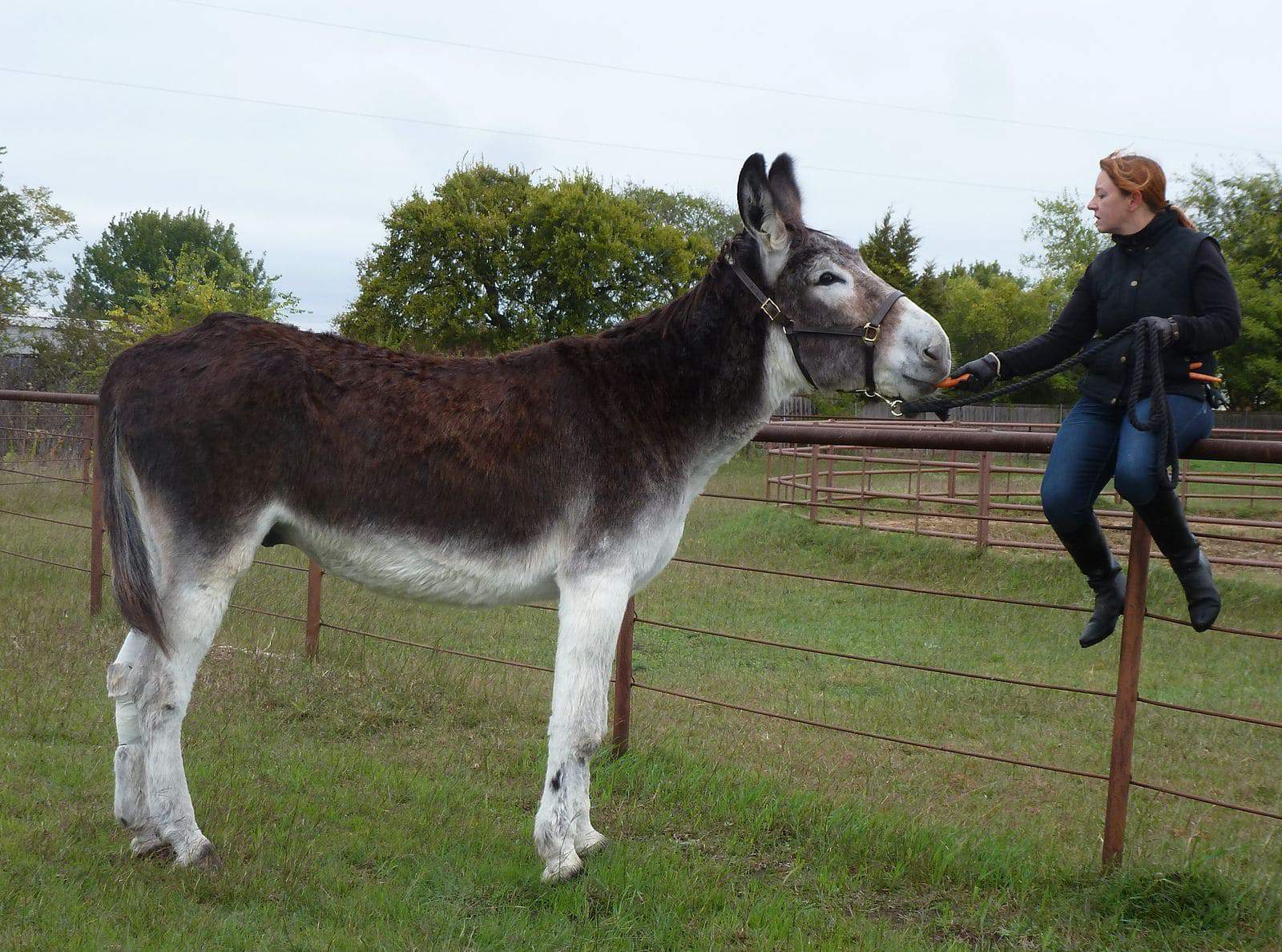
Uses
Historically, Mammoth Donkeys have been used as pack and riding mules, because they are sturdy and have exceptional strength, even when compared to horses. However, their friendly temperament, combined with their ability to be ridden by most adults, means that they have become a popular recreational animal.

Mule Overview
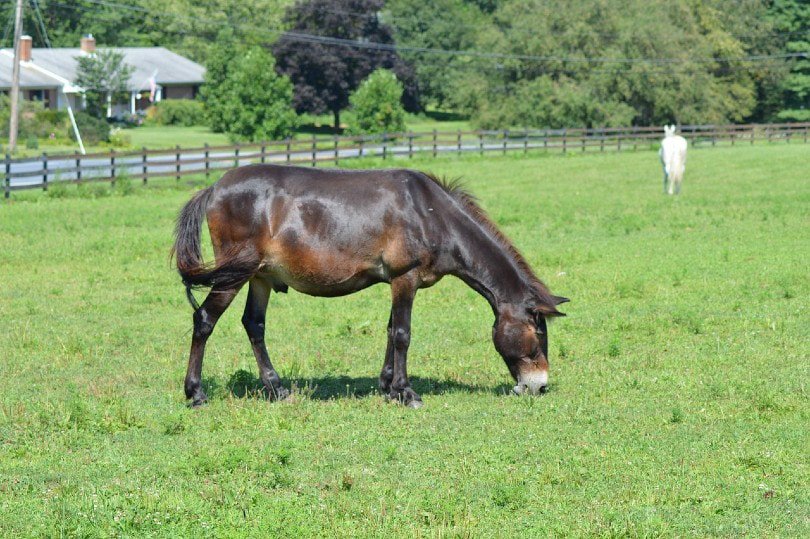
It is hard to know the exact history of the mule, but they must have first bred in an area where both horses and donkeys existed. Most experts agree that Turkey is a likely breeding ground and where humans first intentionally bred a female horse with a male donkey.
Mules were used in Ancient Egypt more than 3,000 years ago, so they have a long connection with humans. They are known for being strong, and this strength, along with their work ethic, has seen them used as pack animals and draught animals.
Characteristics & Appearance
Mules are said to have the body of a horse with the features of a donkey. This means that the mule has the long ears of a donkey and the long face of a horse. Its eyes are similar in shape to a donkey, so larger than a horse’s eyes, but they are wider apart, like a horse.
The mule can grow taller than both its parents, including the mare mother, and it is generally considered stronger than the horse while being bigger and heavier than a donkey, so it is capable of carrying more weight.
Temperament
Mules are said to be stubborn In reality, they tend to be friendly and can be quite affectionate with their humans. They will usually get along with other animals, although they are not as docile and friendly as the donkey parent.
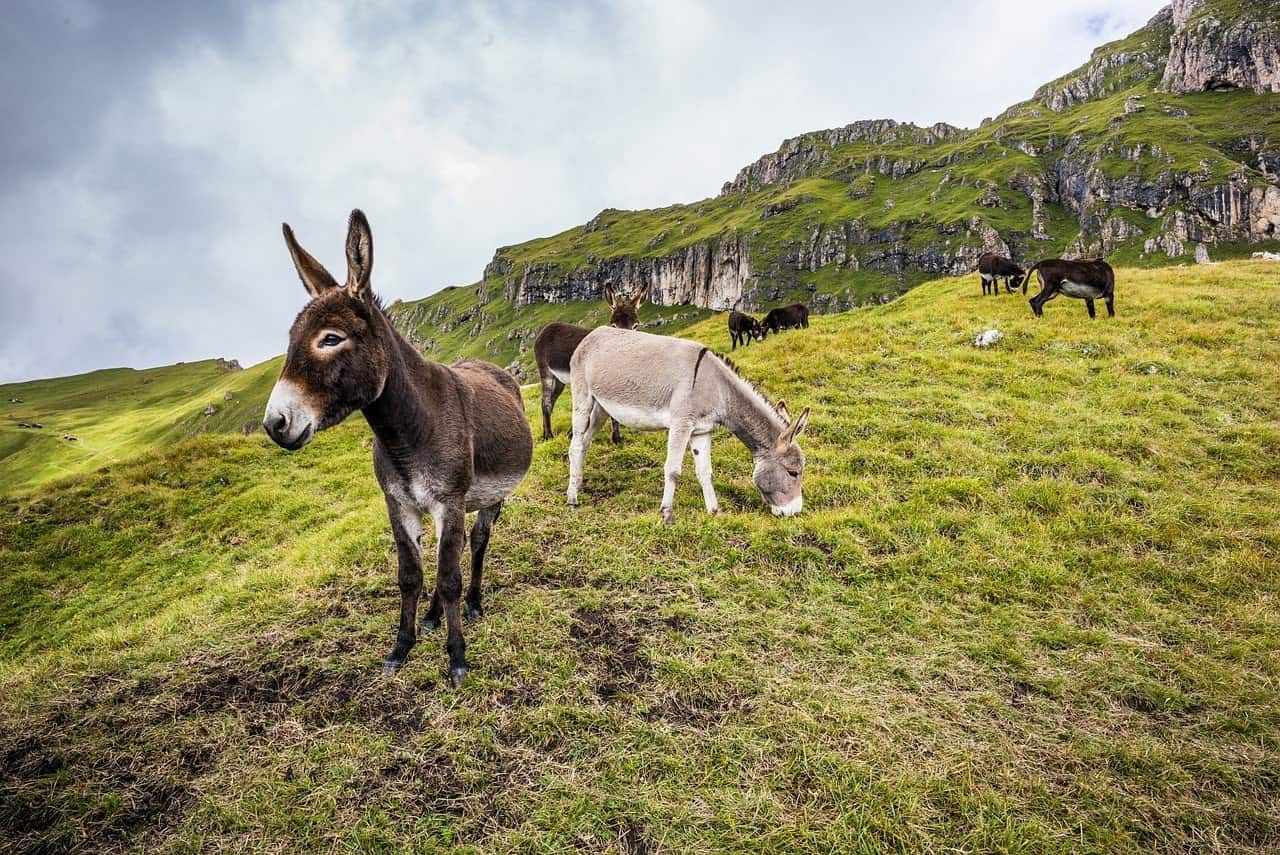
Uses
Mules are stronger than horses, pound for pound, which means that they, like donkeys, have a history of being used as pack animals and draught animals. They can pull heavy loads and they will do so for several hours at a time. They can also be ridden, and their size means that mules can, in some cases, be used for adult riding.
Mules Can’t Breed
Perhaps the biggest difference between these two types of animals is in their ability, or lack of ability, to reproduce. Donkeys have 62 chromosomes, and horses have 64. When the female horse and male donkey reproduce, the resulting offspring receives 32 chromosomes from the horse and 31 from the donkey, giving a total of 63 chromosomes.
Ultimately, the odd number of chromosomes means that meiosis, a type of cell division, cannot occur, so mules cannot reproduce. Because donkeys have two donkey parents, they get 31 chromosomes from each parent, and these chromosomes match, which means that meiosis can occur, and donkeys can reproduce.

Size Difference
As well as breeding capabilities, other major differences between donkeys and mules, in general, include some physical attributes. The mule is said to have the body of a horse and the features of a donkey, although this isn’t strictly true because the mule has a longer face like a horse.
The mule is physically taller and usually heavier than the donkey, although that does depend on the size of the mule and the type of donkey being compared.

Temperament
Donkeys are known for being friendly and affectionate, although this does depend on how much interaction they have had with people during their lives. Mules, too, can be friendly and even affectionate, but they can be a little more horse-like when approached by people. This is said to be because the mule has been reared by its horse mother, and it means that mules can be more cautious around new people.
Both types of animals are hard workers and capable of carrying heavy loads, and both will usually get along well with other animals and other species.

Which Breed Is Right for You?
Mammoth Donkeys and Mules are different animals. While donkeys are a specific species of animal, mules are hybrids that are produced as a result of the reproduction of a male donkey and a female horse. Both are hooved animals and share a lot of similar attributes, but there are some key differences between the two.
The Mule is incapable of reproduction and tends to be larger and heavier even than the Mammoth Donkey, which is one of the largest breeds of donkey, and was developed, at least in part, by George Washington.
Featured Image Credit: Top – Tracy Kerestesh, Shutterstock | Bottom – Frank Bach, Shutterstock
